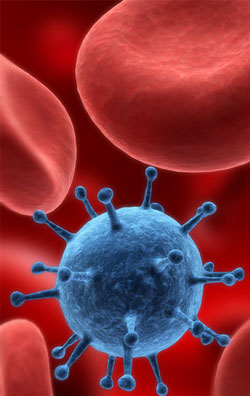
Viruses occupy the “twilight zone” that separates the ‘living’ from the ‘non-living’. Studies reports viruses to be like crystalline particles or living chemicals. Viruses are smallest ‘living units’ which offer themselves as the best model to understand the chemistry of ‘life’.
Even though viruses are microorganisms, they do not have a particular cellular organization. They possess either DNA or RNA. They are strict parasites found inside a living body. They are unaffected by bacterial antibiotics.
The medical importance of viruses lies in their ability to cause a very large number of human diseases. Viral diseases range from minor ailments such as common cold to terrifying diseases like rabies or AIDS. Viruses even cause cancer among birds and animals, as well as in humans.
Size
Viruses are too minute to be seen under normal light microscope. Based on size, the largest virus is the Pox virus and the smallest being the Parvovirus. The overall shape of the virus changes with different groups. Most animal viruses are roughly spherical. Some are irregular. The rabies virus is bullet-shaped, pox virus is brick shaped.
Resistance
Viruses are generally deactivated by heat. 560C for seconds, 370C for minutes and 40C for days kills them. They remain stable at low temperatures. Viruses are easily inactivated by sunlight, UV radiation, etc., but more resistant to chemical disinfectants.
Nomenclature
Nomenclature (naming) of viruses was generally based on;
1. The diseases they caused. E.g., pox virus, measles virus, etc,
2. The systems they affect. E.g., neurotropic (poliomyelitis)
But now the naming and classification are the official responsibility of the International Committee on Taxonomy of Viruses.
Infection
The infectious virus particle is called the virion. Viral infections may range from cellular damage to rapid cell destruction. Some viruses like poliovirus causes cell death. The most characteristic feature of virus infected cells is the presence of special structures called “inclusion bodies”. These can be stained (colored) and visualized through the microscope.
Viral infections may be classified as:
1. Clinical
2. Sub-clinical
Their entry into the body may be through respiratory and alimentary tracts, skin, conjunctiva and the genital tract. Some are congenital (transmitted from mother to child during birth).
Virus after entering the body reaches the target organ through the blood stream. The time taken to reach the target area and cause infection is termed as “incubation period”. E.g. 10-20 days for chicken pox, 5-6 days for dengue, 2-6 months for hepatitis.
Therapy
Antibiotics are not successful against viruses. Certain virus-specific enzymes have been identified which prevents viral multiplication without affecting host cells.
Several antiviral drugs are also been found to be clinically useful. Immunization is found to be more effective in treating the viral infections
Conclusion
Many antiviral drugs are found successful in tissue cultures, but most of them fail during animal tests. Viruses develop resistance to the drugs and breakthrough infection takes place even through treatment.
Better understanding of the cellular and molecular biology of viruses may help in the development of more effective antiviral chemotherapy.





